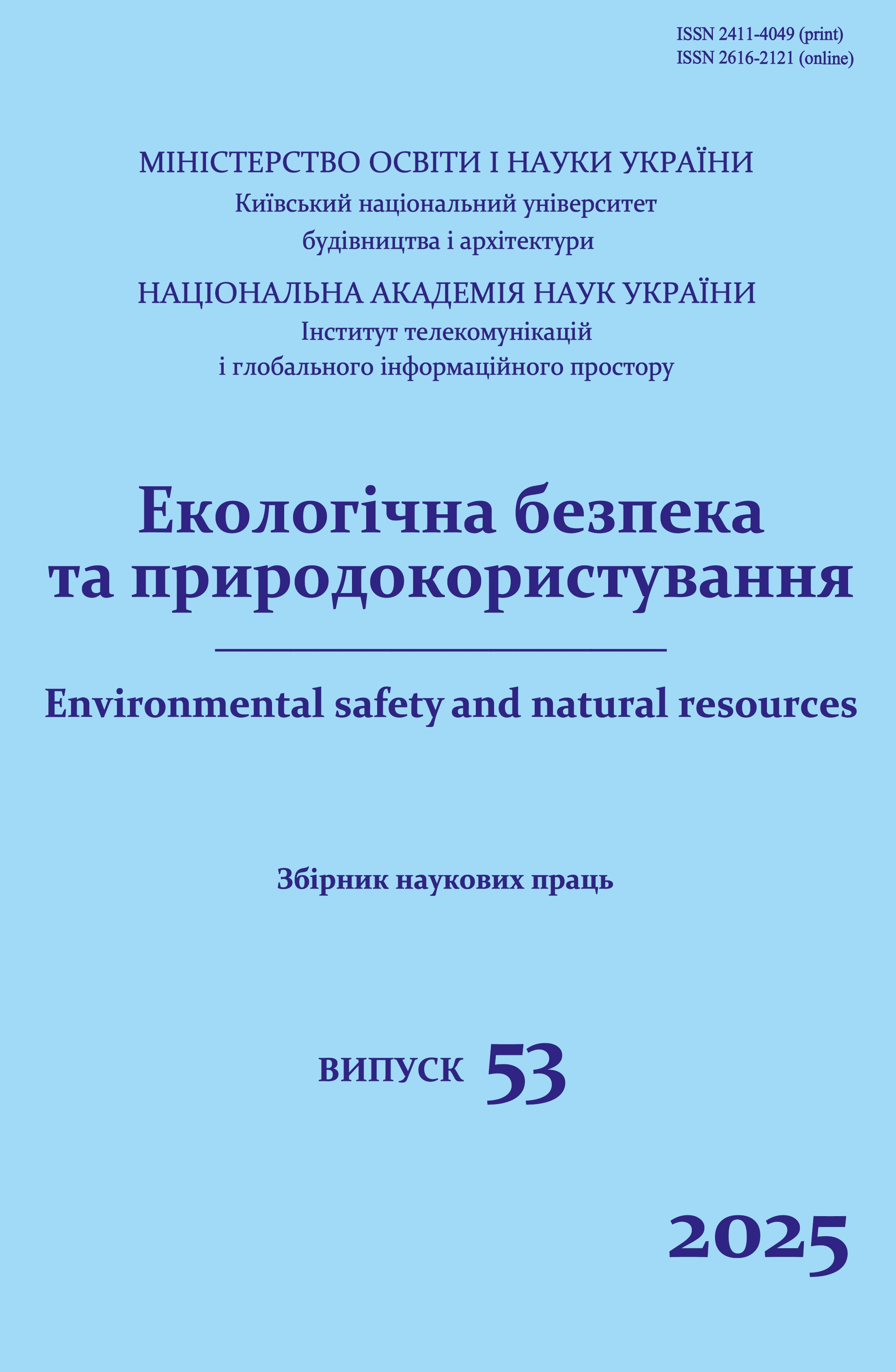Study of spatial and temporal features of municipal solid waste generation in the regions of Ukraine
DOI:
https://doi.org/10.32347/2411-4049.2025.1.69-81Keywords:
municipal solid waste, indicator, service provision standards, waste generationAbstract
The article is devoted to the topical issue of municipal solid waste generation in the regions of Ukraine as an important prerequisite for the formation of an effective waste management system. The purpose of the study is to identify the spatial and temporal features of municipal solid waste generation in the regions of Ukraine (as of 2021) based on certain indicators. The methods of statistical analysis of data on municipal solid waste collection, standards for the provision of solid waste removal services and other databases by regions of Ukraine for different years of the period 2010-2023 were used in the research. The main results of the study are to substantiate the indicator role of specific waste generation and to determine the spatial and temporal features of the quantitative indicators distribution of municipal solid waste generation. In particular, it is determined that there is a certain relationship between GDP and the amount of waste generation, as well as of the area and number of landfills. Waste generation is gradually increasing: over the period 2011-2021, the weight of collected solid waste increased by 9.8% and the volume – by 5.6%. In addition, the standards for the provision of solid waste collection services in the regional centers of Ukraine increased by 12% in average. It was determined that the waste has become somewhat denser, as evidenced by a decrease in the volume but an increase in the weight of collected solid waste during 2018-2021. The collection of solid waste was 1,244 m3/person or 254 kg/person per year (or 0,696 kg/person per day). Taking into account the level of coverage of the population with centralized waste collection services, the actual waste generation is at least by 20% higher. Under martial law, the amount of municipal solid waste was expected to decrease: the volume of collected waste fell by 13.7% and the weight – by 10.7% (2023). It is promising to further analyze the municipal solid waste generation by averaging and interpretation of data. The scientific and practical significance of the results lies in the substantiated analysis of data and synthesis of information on the main features of municipal solid waste generation in Ukraine.
References
Global Waste Management Outlook. (2015). UNEP. 332 p.
Kaza Silpa, Yao Lisa C., Bhada-Tata Perinaz, Van Woerden, Frank. (2018). What a Waste 2.0: A Global Snapshot of Solid Waste Management to 2050. Washington, DC: World Bank. 271 p. doi:10.1596/978-1-4648
Collection of Municipal Solid waste in Developing Countries. (2010). UN-Habitat. 200 p.
Closing the loop – An EU action plan for the Circular Economy. https://eur-lex.europa.eu/legal-content/EN/TXT/?uri=CELEX%3A52015DC0614
Report on the state of municipal solid waste management in Ukraine for 2023. URL: https://www.minregion.gov.ua/napryamki-diyalnosti/zhkh/terretory/stan-sfery-povodzhennya-z-pobutovymy-vidhodamy-v-ukrayini-za-2021-rik/ [in Ukrainian].
National report on the state of the environment in Ukraine in 2011. (2012). Кyiv: Ministry of ecology and natural resourses of Ukraine. https://mepr.gov.ua/wp-content/uploads/2023/05/U-2011-ROTSI.pdf [in Ukrainian].
Environment of Ukraine 2011. (2012). Kyiv: State Statistics Service. https://ukrstat.gov.ua/druk/publicat/Arhiv_u/07/Arch_dov_zb.htm [in Ukrainian].
Prykhodko, V. Yu. (2019). Regional features research of municipal solid waste disposal in Ukraine. Visnyk of V.N. Karazin Kharkiv National University, 21, 51-62 https://doi.org/10.26565/1992-4259-2019-21-04 [in Ukrainian].
Bezdukhov, O.A. (2019). Cluster approach to studing the current state of accumulation and spatial distribution of solid household waste. Scientific Bulletin of Kherson State University, 11, 81-87. https://doi.org/10.32999/ksu2413-7391/2019-11-11 [in Ukrainian].
Patseva, I., Valerko, R., Patsev, I. & Paliy, О. (2023). Peculiarities of logistics processes of transportation of utilities and ruination. Environmental Sciences, №5(50), 187-192. https://doi.org/10.32846/2306-9716/2023.eco.5-50.27 [in Ukrainian].
Viktoriia Khrutba, Tetiana Morozova, Iryna Kotsiuba & Volodymyr Shamrai (2020). Simulation modeling for predicting the formation of municipal waste. Mathematical Modeling and Simulation of System. https://www.researchgate.net/profile/Tetiana-Morozova/publication/343981023_Simulation_Modeling_for_Predicting_the_Formation_of_Municipal_Waste/links/5fece51b45851553a0099e1e/Simulation-Modeling-for-Predicting-the-Formation-of-Municipal-Waste.pdf
Bereziuk, O. (2009). Mathematical modelling and forecasting of solid waste generation and landfill and dumping area in Ukraine. Modern technology, Materials and Design in Construction, №2, 88-91 [in Ukrainian].
Prykhodko, V, Safranov, T. (2024). Study of current changes in municipal waste generation in the regions of Ukraine. Sustainable development: environmental protection. Energy saving. Rational use of natural resources [in Ukrainian].
Report on the state of household waste management in Ukraine for 2023. https://mtu.gov.ua/content/upravlinnya-pobutovimi-vidhodami.html (date of application 15.10.2024) [in Ukrainian].
Downloads
Published
How to Cite
Issue
Section
License
Copyright (c) 2025 Veronika Prykhodko, Tamerlan Safranov

This work is licensed under a Creative Commons Attribution 4.0 International License.
The journal «Environmental safety and natural resources» works under Creative Commons Attribution 4.0 International (CC BY 4.0).
The licensing policy is compatible with the overwhelming majority of open access and archiving policies.

